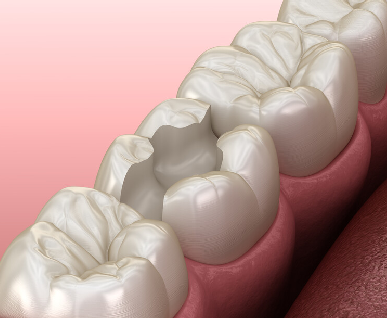8:00 to 20:00 (Mon - Fri)
on request (Sat - Sun)
PROCEDURE DETAILS
Dental Fillings

Dental Fillings Repair Teeth
Dental fillings are a routine procedure to treat cavities, repair cracked, broken teeth, or worn down teeth. Fillings will prevent further damage and restore the tooth to its natural shape and function.
Types of Filling Materials
Available options for filling tooth cavities include dental amalgam. Robust and durable, dental amalgam is low cost, its use is widespread.
Composite fillings are slowly replacing amalgam fillings. They are tooth-colored and less noticeable. Composite fillings consist of a resin material mixed with glass or quartz to provide durability.
They are a good option for smaller cavities but may not be recommended for larger holes or mouth areas subject to significant pressure from chewing.
Ceramic fillings, also known as porcelain fillings, are another tooth-colored filling option that can be matched to the color of the patient's teeth for a natural look.
The dental filling procedure is typically performed in one visit to the dentist. First, the dentist drills and prepares the affected area of the tooth, leaving a hole.
Next, the filling material is placed into the hole and shaped to even out the tooth’s surface. The procedure typically involves injections of local anesthesia to numb the area around the affected tooth.
After the filling material is placed, the patient may experience some sensitivity or discomfort and should avoid certain foods or activities (chewing gum) for a short period to allow the filling to set and prevent damage.
Dental Filling Procedure
Dental Exam
Local Anesthesia
Prepare the Area
Place Material
Place Material
Cure and Harden

When resin-based composites are used, the dentist will apply a special light to the filling to cure and harden it.
Dental fillings have traditionally been one of the most common and least expensive dental treatments. A single filling can be applied in around 30 minutes and is quite affordable.
Maximizing Filling Longevity
Good oral hygiene, such as regular brushing and flossing, is essential to maintaining the longevity of dental fillings.
Bacteria and acids can etch away at the tooth around the edges of the filling and new cavities form underneath.
Regular brushing, flossing, and dental checkups can help prevent further decay and maintain the health of the filling and surrounding teeth.







